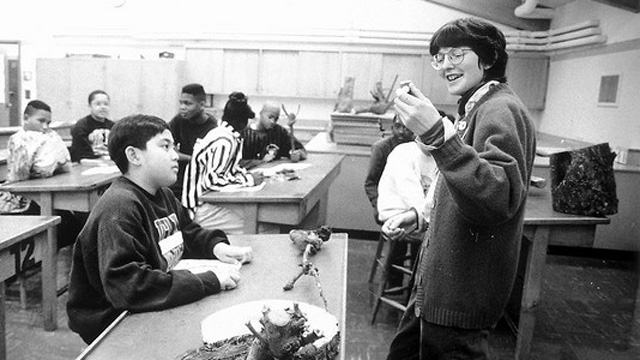Over the past few years, while working on my forthcoming book Brilliant, I've been watching and taking note as a new conceptualization of intelligence takes shape in the social and biological sciences. This conceptualization involves many lines of inquiry that can be loosely grouped under the title situated cognition: the idea that thinking doesn't happen in some abstract, disembodied space, but always in a particular brain, in a particular body, located in a particular social and physical world. The moment-by-moment conditions that prevail in that brain, that body, and that world powerfully affect how well we think and perform.
One of the most interesting lines of inquiry within this perspective is known as embodied cognition: the recognition that our bodies play a big role in how we think. Physical gestures, for example, constitute a kind of back-channel way of expressing and even working out our thoughts. Research demonstrates that the movements we make with our hands when we talk constitute a kind of second language, adding information that’s absent from our words. It’s learning’s secret code: Gesture reveals what we know. It reveals what we don’t know. And it reveals (as Donald Rumsfeld might put it) what we know, but don’t yet know we know. What’s more, the congruence—or lack of congruence—between what our voices say and how our hands move offers a clue to our readiness to learn.
There's plenty of research to back it up. A study published by educational psychology journal Child Development just a few months ago showed that students do better when educators use hand gestures.
Many of the studies establishing the importance of gesture to learning have been conducted by Susan Goldin-Meadow, a professor of psychology at the University of Chicago. “We change our minds by moving our hands,” writes Goldin-Meadow in a review of this work published in a recent issue of the journal Cognitive Science. Particularly significant are what she calls “mismatches” between verbal expression and physical gestures. A student might say that a heavier ball falls faster than a light one, for example, but make a gesture indicating that they fall at the same rate, which is correct. Such discrepancies indicate that we’re in a transitional state, moving from one level of understanding to another.
The thoughts expressed by hand motions are often our newest and most advanced ideas about the problem we’re working on; we can’t yet assimilate these notions into language, but we can capture them in movement. When a child employs gesture, Goldin-Meadow notes, “the information about the child’s cognitive state is conveyed sub rosa—below the surface of ordinary conversation.” Such gesture-speech mismatches have been found in toddlers going through a vocabulary spurt, in elementary-school children describing why the seasons change, and in adults attempting to explain how a machine works.


